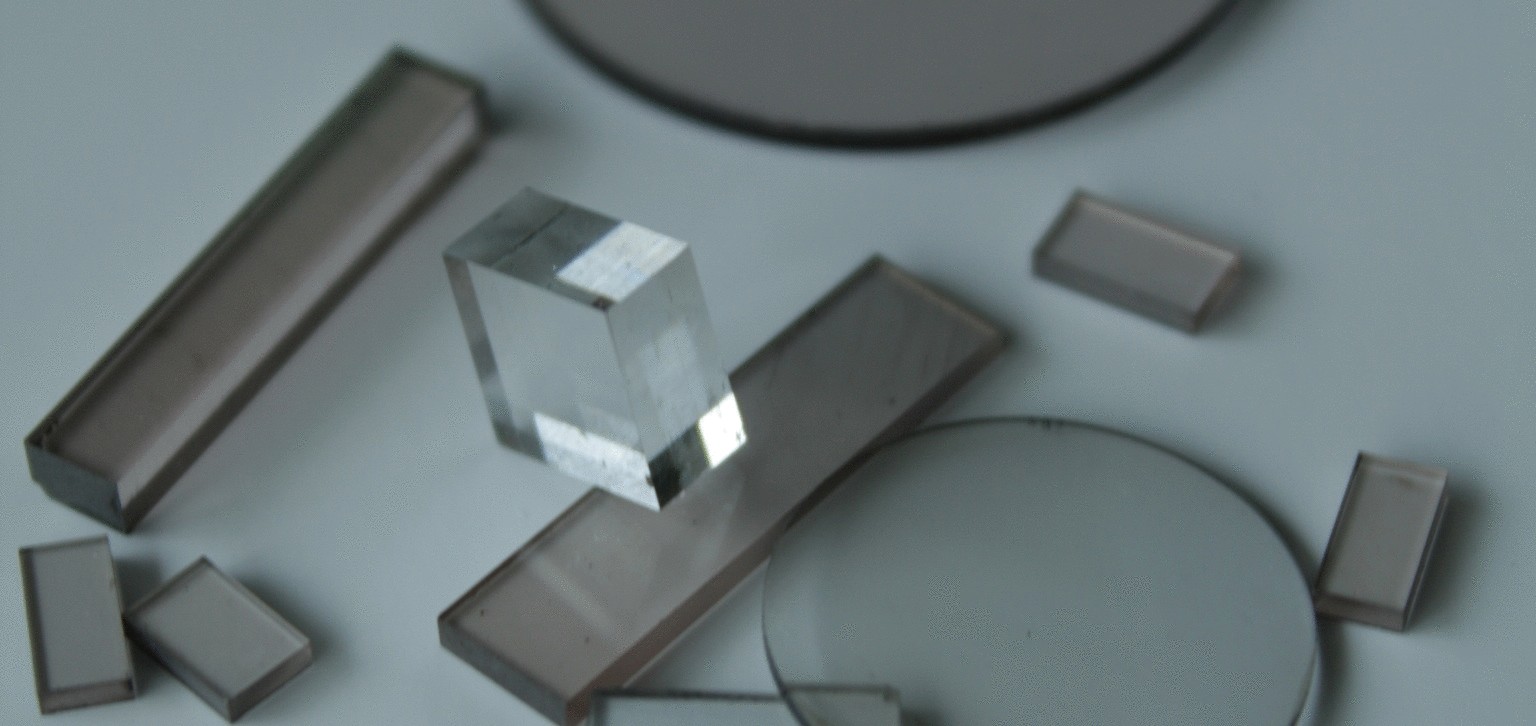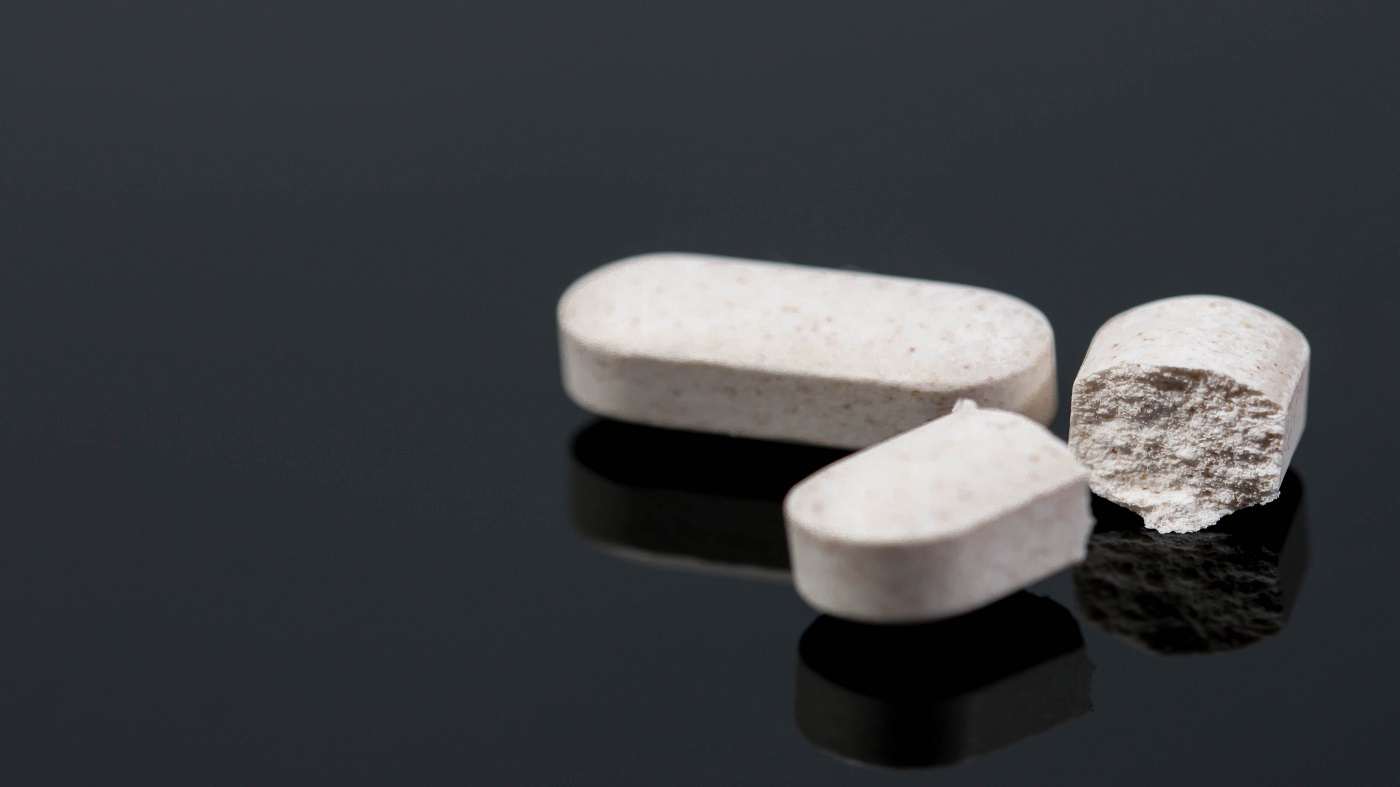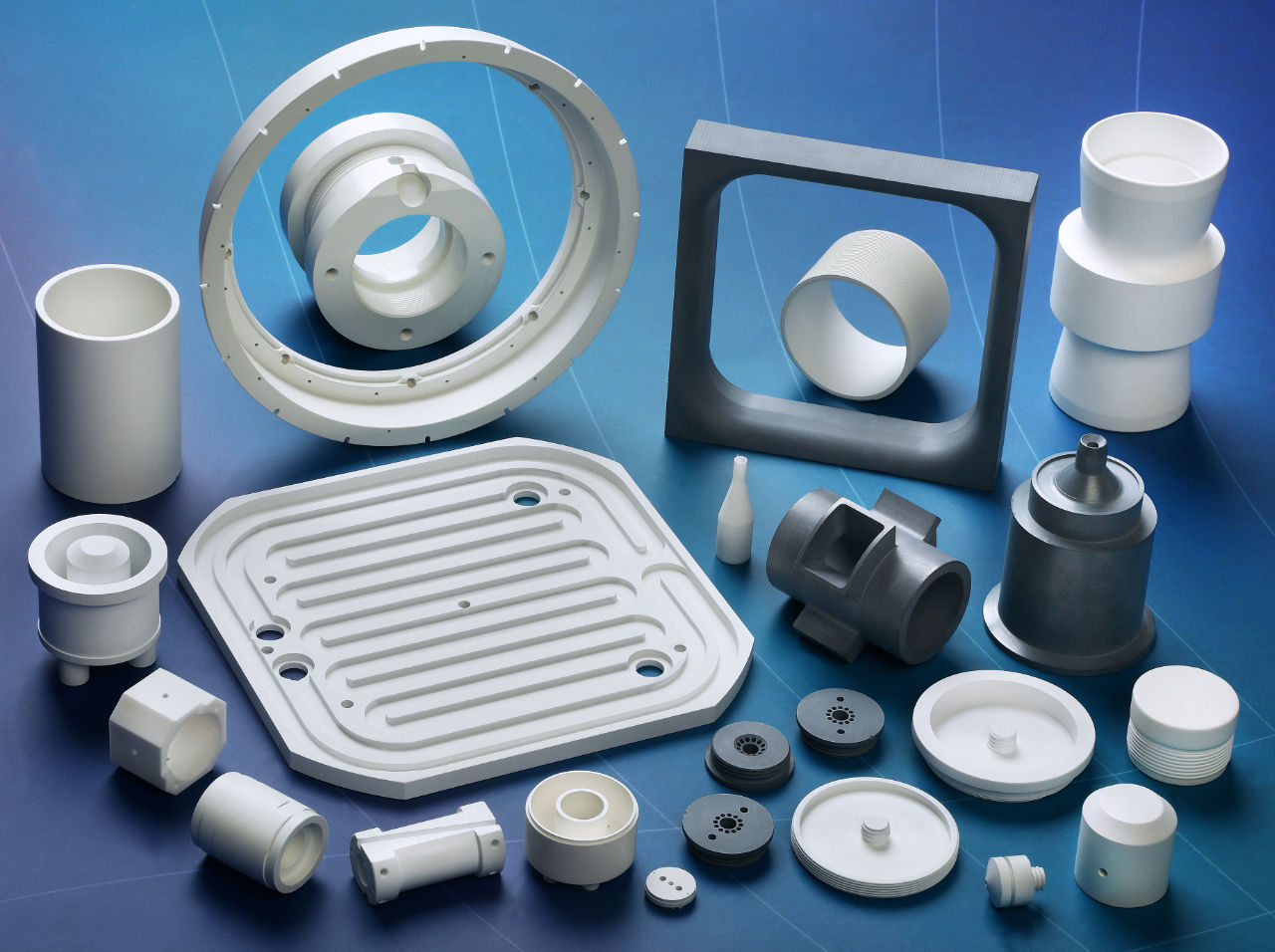The 8 most popular ceramic powders currently
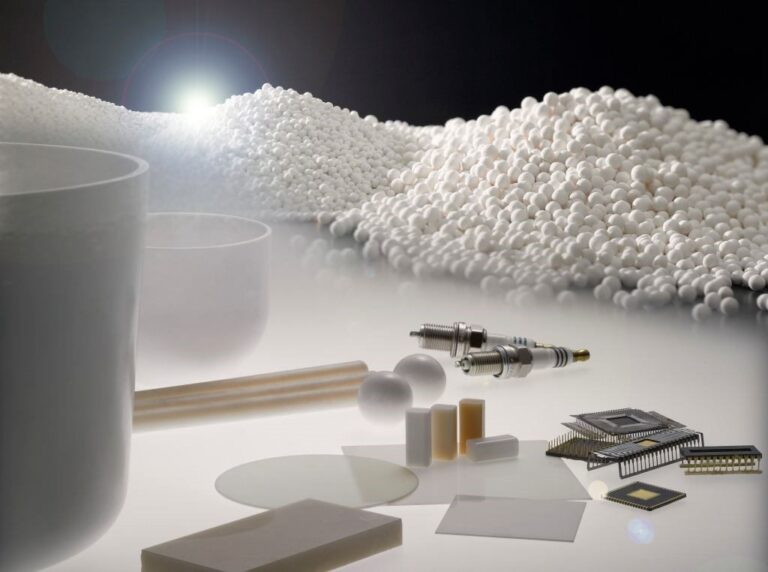
Advanced ceramics have excellent mechanical, acoustic, optical, thermal, electrical, biological and other properties, and can be seen everywhere in high-end technology fields such as aerospace, electronic information, biomedicine, and high-end equipment manufacturing. There are many types of ceramics, and ceramics with different compositions have their own characteristics, such as the oxidation resistance of alumina ceramics, the high strength and electrical corrosion resistance of silicon nitride ceramics, the high toughness and biocompatibility of zirconia ceramics, etc.
High purity alumina
High-purity alumina (4N and above) has the advantages of high purity, high hardness, high strength, high temperature resistance, wear resistance, good insulation, stable chemical properties, moderate high temperature shrinkage performance, etc., and has good sintering properties as well as ordinary alumina With unparalleled optical, electrical, magnetic, thermal and mechanical properties, powder is one of the high-end materials with the highest added value and the most widely used in modern chemicals. As a representative category of high-performance alumina products, high-purity alumina is widely used in high-tech and cutting-edge industries such as fluorescent materials, transparent ceramics, electronic devices, new energy, catalytic materials, and aerospace materials.
Boehmite
Boehmite contains a crystal water with the chemical formula γ-Al2O3·H2O or γ-AlOOH, which is a type of aluminum oxide hydrate.
Aluminum Nitride
Based on the current development of electronic chips whose comprehensive performance is getting higher and higher and whose overall size is getting smaller and smaller, the heat flow density displayed during the working process of electronic chips has also increased significantly. Therefore, selecting appropriate packaging materials and processes and improving device heat dissipation capabilities have become technical bottlenecks in the development of power devices. Ceramic materials themselves have properties such as high thermal conductivity, good heat resistance, high insulation, high strength, and thermal matching with chip materials, making them very suitable as power device packaging substrates.
Silicon nitride
Silicon nitride is currently mainly used as a ceramic material, and silicon nitride ceramics are an indispensable key material in industrial technology, especially cutting-edge technology.
Spherical alumina
Among many thermally conductive powder materials, spherical alumina relies on its high thermal conductivity, high filling coefficient, good fluidity, mature technology, rich specifications and relatively reasonable The price has become the most mainstream thermal conductive powder category in the high-end thermal conductivity field in the thermal conductive powder industry.
Barium titanate
Barium titanate (BaTiO3) is an ABO3 type perovskite structure. Since the excellent dielectric properties of barium titanate ceramics were discovered in the first half of the 20th century, it has been used as a dielectric material for capacitors. It is currently the most commonly used dielectric material. One of the most common electronic ceramic powders is also the parent material for manufacturing electronic components, so it is called the "backbone of the electronic ceramic industry."
Nanocomposite zirconia
Nanocomposite zirconia is a type of zirconia that can maintain the tetragonal or cubic phase at room temperature after adding stabilizers. The stabilizers are mainly rare earth oxides (Y2O3, CeO2, etc.) and alkaline earth metal oxides (CaO, MgO, etc.) ).
High purity silicon carbide
Silicon carbide materials can be mainly divided into two categories: ceramic and single crystal. As a ceramic material, its purity requirements are not very strict in general application fields. However, in some special environments, such as photolithography machines and other semiconductor equipment, when used as precision components, its purity needs to be strictly controlled to avoid affecting the quality of silicon wafers Purity.
Applications of diamonds with different crystal structures
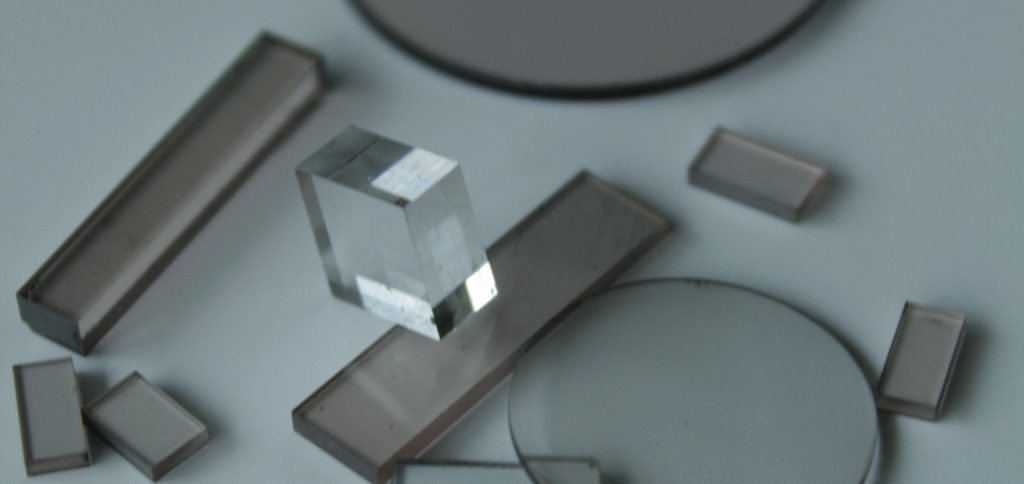
A natural diamond requires carbon atoms to be born at a depth of 150-200 kilometers underground and undergo hundreds of millions of years of high temperature and pressure. To appear in front of people, it must continue to be brought to the surface of the earth by geological movements over time. , it can be said to be very scarce. So by simulating the crystallization conditions and growth environment of natural diamonds, people used scientific methods to synthesize artificial diamonds that also have excellent properties such as super hardness, wear resistance, and corrosion resistance, shortening the synthesis time of diamonds to more than ten days or even a few days. Synthetic diamonds are divided into single crystals and polycrystals. They each have unique crystal structures and characteristics, making them different in applications.
1. Single crystal diamond
Single crystal diamond is a crystal bound by covalent bonds with saturation and directionality. It is the most common type of diamond crystal. The particles inside the crystal are regularly and synchronically arranged in three-dimensional space, with few defects. , without grain boundary restrictions, so it has outstanding advantages in thermal conductivity, hardness, light transmittance and electrical properties.
Thermal conduction applications
The thermal conductivity of diamond basically comes from the propagation of carbon atom vibrations (that is, phonons). Impurity elements, dislocations, cracks and other crystal defects in diamond, residual metal catalysts, lattice orientation and other factors will collide with phonons. It scatters, thereby limiting the mean free path of phonons and reducing thermal conductivity. Single crystal diamond has a highly ordered lattice structure, which makes it almost unaffected by grain boundary scattering. Therefore, it has a thermal conductivity of up to 2200 W/(m·K).
Optical applications
High-quality single crystal diamond prepared by the CVD method can be completely colorless and transparent, with almost no impurities. Its highly ordered crystal structure also prevents light from being interfered by structural irregularities when propagating in the crystal, thus showing Produce more excellent optical performance.
Cutting applications
The microhardness of single crystal diamond tools is as high as 10000HV, so it has good wear resistance. Since the cutting edge of single crystal diamond can achieve atomic level straightness and sharpness, the perfect cutting edge can be copied directly onto the workpiece during cutting to produce a mirror surface with extremely smooth finish, ensuring extremely high dimensional accuracy. , and can maintain the tool life and stable performance under high-speed cutting and heavy load. It is suitable for ultra-thin cutting and ultra-precision machining.
Grinding and polishing
Single crystal diamond has good dispersion and higher utilization rate of sharp corners. Therefore, when it is prepared into a grinding liquid, the concentration is much lower than that of polycrystalline diamond, and its cost performance is relatively high.
2. Polycrystalline diamond
The structure of polycrystalline diamond is composed of many tiny nanometer-sized particles bonded through unsaturated bonds, which is very similar to natural black diamond (natural polycrystalline diamond with black or dark gray as the main color).
Semiconductor field
As semiconductor materials, the application directions of diamond polycrystalline and single crystal materials are quite different. The optical and electrical properties of polycrystalline diamond are not as good as those of single crystal diamond. The application of optical grade and electronic grade polycrystalline diamond films is relatively demanding. The preparation requires ideal deposition rate and extremely low or controllable defect density.
Grinding and polishing
Since the polycrystalline diamond grains do not need to be arranged, the micro-fractures produced when subjected to high pressure can be limited to a small range of microcrystals, without large cleavage plane fractures, and have good self-sharpening properties, so they are allowed to be ground during grinding. And use higher unit pressure when polishing.
Cutting tools
Compared with large single crystals of diamond, the disordered crystal structure of polycrystalline diamond gives it more impact resistance and is less likely to crack during cutting.
The key technical problems of ultrafine powder - dispersion and agglomeration
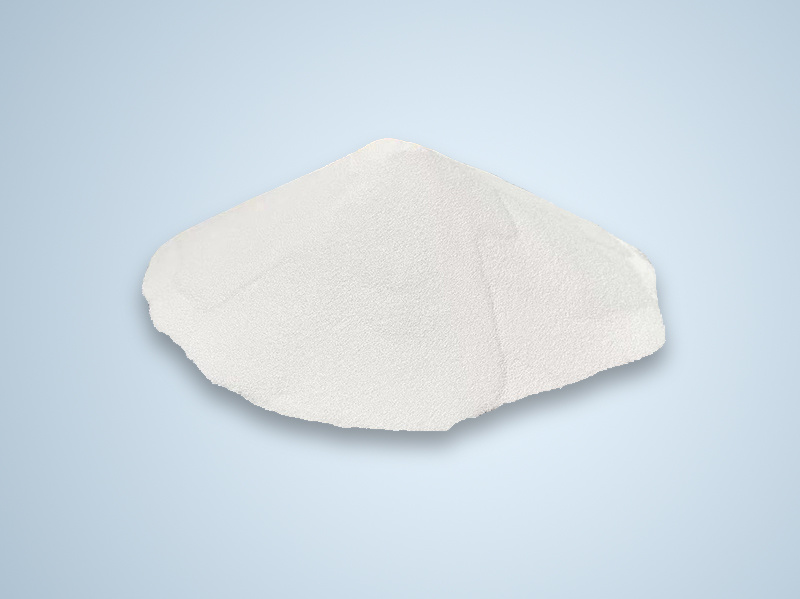
The agglomeration of ultrafine powder refers to the phenomenon that the original powder particles are connected to each other during the preparation, separation, processing and storage processes, and multiple particles form larger particle clusters. It is currently believed that there are three main reasons for the agglomeration of ultrafine powders: intermolecular forces causing agglomeration of ultrafine powders; electrostatic forces between particles causing agglomeration; and particle adhesion in the air.
1. Intermolecular forces cause ultrafine powder agglomeration
When the mineral material is ultrafine below a certain level, the distance between particles is extremely short, and the van der Waals force between particles is much greater than the gravity of the particles themselves. Therefore, such ultrafine particles tend to attract each other and agglomerate. Hydrogen bonds, adsorbed wet bridges and other chemical bonds on the surface of ultrafine particles can also easily lead to adhesion and aggregation between particles.
2. Electrostatic forces between particles cause agglomeration
During the ultrafine process of mineral materials, due to impact, friction and reduction in particle size, a large amount of positive or negative charges accumulate on the surface of new ultrafine particles. Some of the protrusions on the surface of these particles are positively charged and some are negatively charged. These charged particles are extremely unstable. In order to become stable, they attract each other and contact and connect with each other at the sharp corners, causing the particles to agglomerate. This process is The main force is electrostatic force.
3. Adhesion of particles in air
When the relative humidity of the air exceeds 65%, water vapor begins to condense on the surface of the particles and between the particles, and the agglomeration effect is greatly enhanced due to the formation of liquid bridges between the particles.
Dispersion of ultrafine powder
The dispersion of ultrafine powders mainly focuses on the dispersion state of particles in the gas phase medium and the dispersion state in the liquid phase.
Dispersion method in liquid phase: 1. Mechanical dispersion method. (The mechanical dispersion method is a method that uses mechanical energy such as external shear force or impact force to fully disperse nanoparticles in the medium. Mechanical dispersion methods include grinding, ordinary ball mill, vibration ball mill, colloid mill, air mill, mechanical stirring, etc.) 2. Chemical dispersion method 3. Ultrasonic method
Dispersion method in gas phase: 1. Dry and disperse 2. Mechanical dispersion (Mechanical dispersion refers to using mechanical force to break up the agglomeration of particles. Its necessary condition is that the mechanical force should be greater than the adhesion force between particles. Usually the mechanical force is caused by the strong turbulent movement of the airflow caused by the high-speed rotating impeller disc or the jet and impact of the high-speed airflow.) 3. Electrostatic dispersion
There are many modification methods for ultrafine powder, which are also very different from the previous mainstream methods. However, no matter which method is used, it is necessary to further study the modification principle of ultrafine powder and find a new modification method that is suitable for various modification requirements and can be applied to actual production.
Processing technology and application of fruit and vegetable powder

Processing technology of fruit and vegetable powder
1.Ultra-fine grinding technology
Generally refers to the processing of 0.1-10μm ultra-fine powder and corresponding classification technology. The particle size of the product particles is extremely small, the specific surface area increases sharply, and the cell wall breaking rate increases, thereby improving the physical and chemical properties of the material (dispersion, adsorption, dissolution properties, chemical activity, biological activity, etc.), expand the application scope of materials, and enhance the use effects of materials.
2. Bioenzymatic hydrolysis technology
For fresh fruits, vegetables and fungi, bioenzymatic treatment is used after crushing to break down the cell walls and dissolve nutrients.
3. Vacuum freeze drying
Vacuum freeze-drying technology is a new drying method that freezes water-containing materials into solids and uses the biochemical properties of water to dehydrate materials at low temperatures and achieve dryness under low-temperature and low-pressure conditions.
4. Spray drying technology
Spray drying is used to make powder. The raw material used is sauce-like liquid, which avoids the problem of difficult processing and molding. The drying process is completed instantaneously (a few seconds) at a temperature not higher than 100°C. Generally, the color, aroma, and taste of fruits are harmonious. The nutrients can be better protected and it is currently the best method for fruit and vegetable flour making.
5. Low temperature differential pressure puffing technology
The variable temperature pressure difference puffing drying technology is a combined drying technology that draws on hot air drying, vacuum expansion drying, etc. It absorbs the advantages of hot air drying and vacuum freeze drying, overcomes the shortcomings of vacuum low-temperature frying drying, and can produce products similar to The products processed by freeze drying belong to a new, environmentally friendly and energy-saving puffing and drying technology.
6. Screw extrusion technology
By means of the friction, extrusion and melting effect of the screw and barrel on the material, the purpose of transportation, compression and crushing, mixing, expansion and polymerization is achieved.
7.Microwave/vacuum technology:
Combines microwave drying and vacuum drying technologies. It accelerates water loss at low temperatures and is suitable for substances with high heat sensitivity. It is suitable for the production of vegetable powder, egg yolk powder and dehydrated grapes.
Application of fruit and vegetable powder in food
Fruit and vegetable powder can be applied to various fields of food processing, helping to increase the nutritional content of products, improve the color and flavor of products, and enrich product varieties.
Mainly used for: Pasta products, such as adding radish powder to noodles to make carrot noodles; Puffed foods, such as using tomato powder as a seasoning for puffed foods; Meat products, such as adding vegetable powder to ham sausage; Dairy products, For example, various fruit and vegetable powders are added to milk products; candy products, apple powder and strawberry powder are added during candy processing; baked products, such as onion powder and tomato powder are added during biscuit processing.
Using fruit and vegetable powder to make drinks does not affect the flavor of fresh fruits and vegetables; fruit powder can be made into fruit wine and fruit vinegar through fermentation, blending and filtration processes.
Candy, pastries, biscuits, bread and many other foods can add a certain proportion of fruit and vegetable powder during the production process, which can improve the nutritional structure of the product and make the product better in color, aroma and taste.
Fruit and vegetable powders contain pigments, pectin, tannins and other ingredients. Some specific fruits and vegetables also contain medicinal ingredients, from which valuable by-products can be extracted through biochemical pathways.
Fruit and vegetable juices are rich in a variety of vitamins and minerals. After proper processing, cyclodextrin and other substances are added to effectively embed and protect most of the nutrients in the fruit and vegetable juices, and at the same time, some nutrients are strengthened, and then Homogenize and vacuum freeze-dry to obtain nutritious fruit and vegetable powder.
Adding fruit and vegetable powder to food for infants, young children and the elderly can supplement vitamins and dietary fiber for a balanced diet.
Diversity and application fields of microcrystalline alumina ceramics
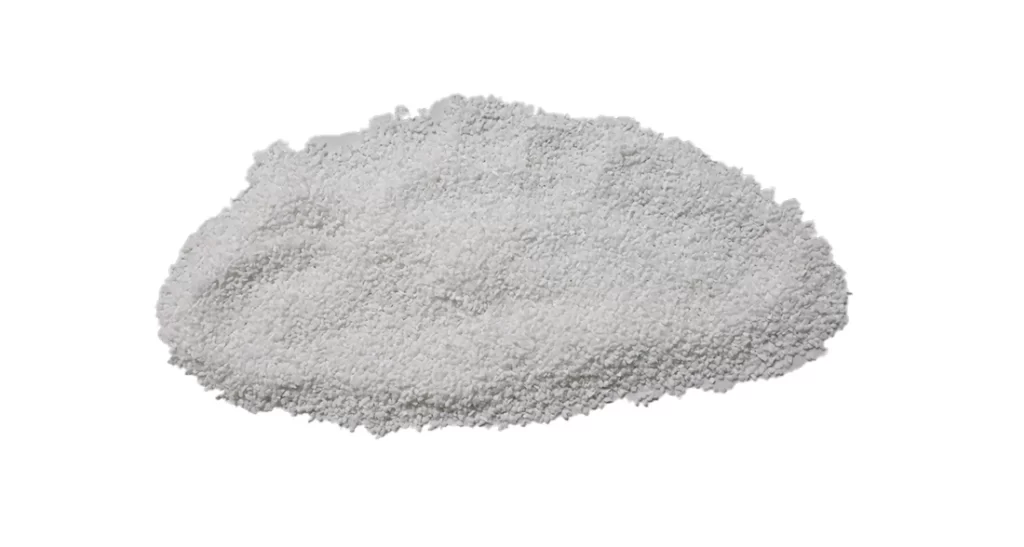
Microcrystalline alumina ceramics refers to alumina ceramic materials that use high-purity α-Al2O3 powder as the main raw material, are made through ceramic technology, the crystal grain size is less than 6 μm, and corundum is the main crystal phase.
Microcrystalline alumina ceramics are usually divided into two types: high purity type and ordinary type:
High purity microcrystalline alumina ceramics
High-purity microcrystalline alumina ceramics refer to alumina ceramic materials with an Al2O3 content of more than 99.9%. Its sintering temperature is as high as 1650~1990℃, and the transmission wavelength is in the range of 1~6μm. It uses its light transmittance and resistance to alkali metal corrosion and other properties, often used as high-pressure sodium lamp tubes.
Ordinary microcrystalline alumina ceramics
Ordinary microcrystalline alumina ceramics can be divided into 99, 95, 92, 90, 85 porcelain and other varieties according to the Al2O3 content (sometimes those with an Al2O3 content of 80% or 75% are also classified as ordinary alumina). Among them, 99 alumina ceramic materials are often used to make high-temperature crucibles, refractory furnace tubes and other special wear-resistant materials (such as ceramic bearings, ceramic seals and water valves). In the electronics industry, they can be used as integrated circuit substrates and high-end materials. Frequency insulating materials, commonly used in the chemical industry as catalyst carriers, etc.; 95, 92, and 90 alumina porcelain are mainly used as corrosion-resistant, wear-resistant materials and wear-resistant parts; 85 porcelain is often mixed with some talc, which improves the electrical properties With good mechanical strength, it can be sealed with niobium, tantalum and other metals and used as electronic vacuum device components.
Application fields of microcrystalline alumina ceramics
Non-metallic mineral deep processing industry
At present, billions of tons of non-metallic minerals are crushed and ground every year around the world, requiring a large amount of microcrystalline alumina ceramic grinding media and other various grinding media. Due to the excellent wear resistance of microcrystalline alumina ceramic grinding media and the requirements for high-quality ceramic products on grinding media, it will become an inevitable trend for microcrystalline alumina ceramic grinding media to gradually replace other grinding media in the future.
Electronic field
Microcrystalline alumina ceramics have excellent insulation properties and thermal stability, so they are widely used in the field of electronics and electrical appliances to manufacture electronic components, circuit boards, semiconductor packaging, etc. With the rapid development of the electronic industry, especially the microelectronics industry, the demand for alumina ceramic substrates continues to increase.
Petrochemical
Microcrystalline alumina ceramics, especially microcrystalline alumina ceramics with an alumina content of more than 97%, are typically used in oil and gas drilling equipment as nozzles, valve seats, regulating devices, pump accessories, drill bit accessories, etc. Works normally under high pressure, vibration environment, even in the presence of acids and alkalis.
Military field
Microcrystalline alumina ceramics also have many applications in the military field, such as ballistic armor for aircraft, vehicles and personnel.
Coal-fired power generation field
Microcrystalline alumina bricks and curved plates are successfully used as linings for coal-fired power generation equipment. This lining material is used for high-speed feeding of pulverized coal particles, burners, fly ash and residue treatment, etc., especially coal combustion The fly ash produced contains high amounts of quartz and different minerals and slag components, and their abrasive power is stronger than that of coal particles. Due to the different composition of fly ash, the pH value of mortar has a wide range (2.5-12) and is highly corrosive. Therefore, microcrystalline alumina products can be used as ideal materials for lining coal-fired power generation equipment.
Application Fields of Spherical Alumina Powder
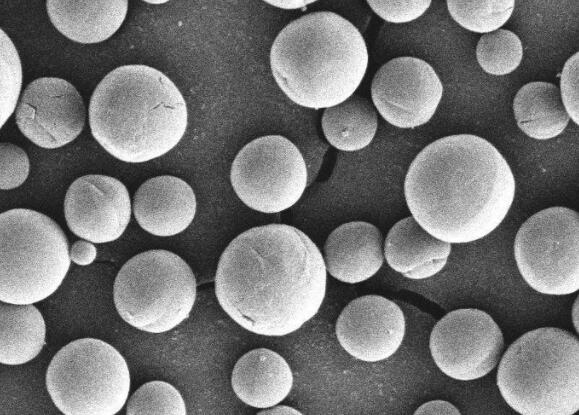
The unique physical and chemical properties of ultrafine spherical alumina make it widely used in bioceramics, surface protective layer materials, chemical catalysts and catalyst carriers, integrated circuit chips, aerospace, infrared absorption materials, and moisture-sensitive sensors.
The excellent performance of ultrafine spherical alumina products in many fields is closely related to the morphology and size of the raw powder particles. Regular morphology, small specific surface area, large packing density, good flow performance, high hardness and strength can greatly improve the application performance of the product.
Application fields of spherical alumina powder
1. Precision polishing abrasives
Alumina has gradually been widely used in industries such as precision processing and manufacturing due to its high hardness and good stability, especially in chemical mechanical polishing (CMP).
2.Special ceramic raw materials
The requirements for ceramic bodies are high density, small shrinkage deformation, and easy sintering. The size, morphology and dispersion of ceramic powder are important indicators to measure the performance of the powder. Among the many morphologies of powder, dispersed spherical micro-powder is better.
3. Other applications
Spherical alumina powder can be used as a support for porous alumina. Since the pores formed are relatively regular, it is easy to homogenize the entire support. Alumina powder for filling requires good fluidity, strong ability to combine with organic matter, and a spherical shape is preferred. Alumina is also the main raw material for three primary colors and long afterglow phosphors. In addition, it also has many applications in the fields of catalysts and catalyst carriers.
Preparation of ultrafine spherical alumina
With the rapid development of global industry, spherical alumina powder has been extensively studied in the past 10 years. The preparation of spherical alumina has become a hot topic in materials research.
Ball milling method
The ball milling method is the most common method for preparing ultrafine alumina powder. The rotation or vibration of the ball mill is usually used. The raw materials are impacted, ground and stirred by the abrasive, and the large particle size powder is refined into ultrafine powder.
Homogeneous precipitation method
The precipitation process in a homogeneous solution is a process in which crystal nuclei form, then aggregate and grow, and finally precipitate from the solution. If the concentration of the precipitant in the homogeneous solution can be reduced, or even generated slowly, it will be uniform. A large number of tiny crystal nuclei are generated, and the eventually formed fine precipitation particles will be evenly dispersed throughout the solution and will maintain an equilibrium state for a long time. This method of obtaining precipitation is called homogeneous precipitation.
Sol-emulsion-gel method
In order to obtain spherical powder particles, people use the interfacial tension between the oil phase and the water phase to create tiny spherical droplets, so that the formation and gelation of sol particles are limited to tiny droplets, and finally a spherical precipitation is obtained. Particles.
Drop ball method
The drop ball method is to drop alumina sol into an oil layer (usually paraffin, mineral oil, etc.), and form spherical sol particles by surface tension. Then the sol particles are gelled in an ammonia solution, and finally the gel particles are A method of drying and calcining to form spherical alumina.
Other methods
Spraying method: The essence of preparing spherical alumina by spraying method is to achieve phase transformation in a short time, and use the effect of surface tension to spherical the product. According to the characteristics of phase transformation, it can be divided into spray pyrolysis method and spray drying method. and injection melting.
Aerosol decomposition method: usually aluminum alkoxide is used as the raw material, and the aluminum alkoxide is easily hydrolyzed and pyrolyzed at high temperature, and the physical method of phase change is used to vaporize the aluminum alkoxide, and then contact with water vapor to hydrolyze and atomize , and then dried at high temperature or directly pyrolyzed at high temperature to achieve gas-liquid-solid or gas-solid phase transformation, and finally form spherical alumina powder.
Ultrafine spherical alumina powder has high added value and can bring greater social and economic benefits. In recent years, its demand has continued to grow. Therefore, the spheroidization of ultrafine alumina particles can greatly improve the application performance of its products and has great economic benefits. It is believed that the spheroidized alumina powder market will further expand!
How much do you know about medicinal talc?
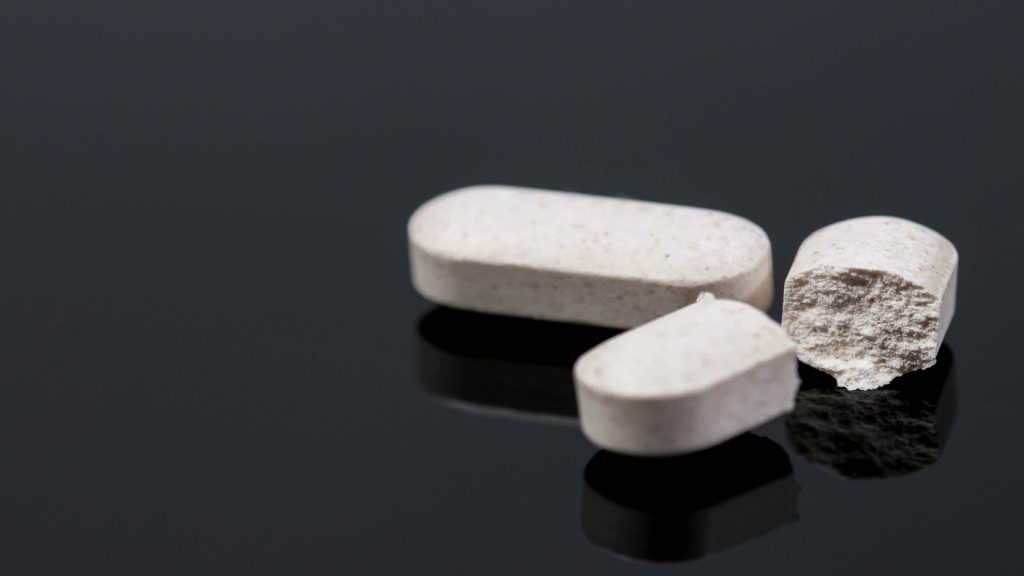
In the pharmaceutical industry, talc powder has a wide and long history of use. It is often used as a lubricant and diluent in oral solid preparations such as tablets and capsules.
The main component of talc powder is hydrous magnesium silicate, which is mainly composed of magnesium oxide, silicon dioxide and a small amount of water.
(1) Structure of talc powder
Talcum powder has a flaky structure and belongs to the monoclinic crystal system. The crystals are flaky, with lamellae as the basic unit. Different lamellae are connected by weak van der Waals forces. When sheared by external forces, peeling between layers is easy to occur. , slipping phenomenon. Talcum powder particles are usually leaf-shaped or radial, colorless, tasteless and odorless, with excellent physical properties and insoluble in water.
(2) Physical and chemical properties of talc powder
Talcum powder is a white or off-white, sand-free fine powder with a pearly luster on its cleavage surface. It is odorless and tasteless, has a greasy feel, and is easy to adhere to the skin. It can be dissolved in water, dilute hydrochloric acid or 8.5% sodium hydroxide solution. Insoluble. The hardness is 1.0~1.5, the refractive index is 1.54~1.59, and the specific gravity is 2.7~2.8.
(3) Processing of talc powder
Raymond mill, mechanical impact crusher, jet mill and other equipment are commonly used for grinding talcum powder. High-pressure suspension roller mill and Raymond mill are suitable for processing talc powder with larger particle size, while ultra-fine grinding mill is mainly used for processing talc powder with smaller particle size.
After the medicinal talc is ground into powder, it needs to be flotated to remove various impurities, such as asbestos (tremolite), carbon, dolomite, iron oxide and various other aluminum salts and carbonate minerals , then made into fine powder, treated with dilute hydrochloric acid, washed with water, and then dried.
Application of talcum powder in preparation technology
(1) Used as a dispersant for volatile oils
Because talc powder has a certain adsorption capacity, it can adsorb volatile oil to the surface of its particles and disperse it evenly. It increases the solubility of volatile oil by increasing the contact area between volatile oil and liquid medicine.
(2) Cover with powder coating layer
In sugar coating, talc powder can be used to coat the powder coating layer. White talc powder that passes through a 100-mesh sieve is suitable. The dosage is generally 3% to 6%. It can not only eliminate edges and corners and facilitate coating, It can also improve the stability of sugar-coated tablets.
(3) Used as lubricant
Currently, talc powder is often used as a lubricant in the prescriptions of dispersible tablets, capsules, chewable tablets, effervescent tablets, and sustained-release tablets. Talcum powder can reduce the friction between drug powders and improve the fluidity of drug powders by filling the depressions on the surface of drug powders.
(4) Used as filter aid
Talcum powder is not easy to react with drugs and has certain adsorption capacity, so it can be used as a filter aid. Talcum powder activated at 115°C, when added to the medicinal solution while hot, can absorb a small amount of polysaccharides, mucus, and gum impurities without destroying the active ingredients of the medicine itself.
Application of talc powder as pharmaceutical excipients
(1) Used as a disintegrant for hydrophobic drugs
After talcum powder is added to the drug, because it is a hydrophilic substance, it can improve the hydrophilicity of the entire drug, making it easier for water to penetrate into the drug and make it easier to disintegrate. Therefore, talc powder can be used as a disintegrant to shorten the disintegration of the drug. time, especially for hydrophobic drugs.
(2) Used as anti-adhesive agent
Stickiness problem is a common problem in the coating process, which can lead to slow coating speed, longer production cycle, pellet adhesion, reduced yield, film damage, affecting drug release and other problems.
(3) Increase the critical relative humidity of the drug
For drugs that easily absorb moisture, talcum powder can be added to the prescription to improve the stability of the drug.
(4) Affecting the release of drugs
It has been reported in the literature that insoluble particles in functional coating formulations can affect drug release characteristics, but the results and mechanisms of action are different.
Development and application of high-performance boron nitride materials
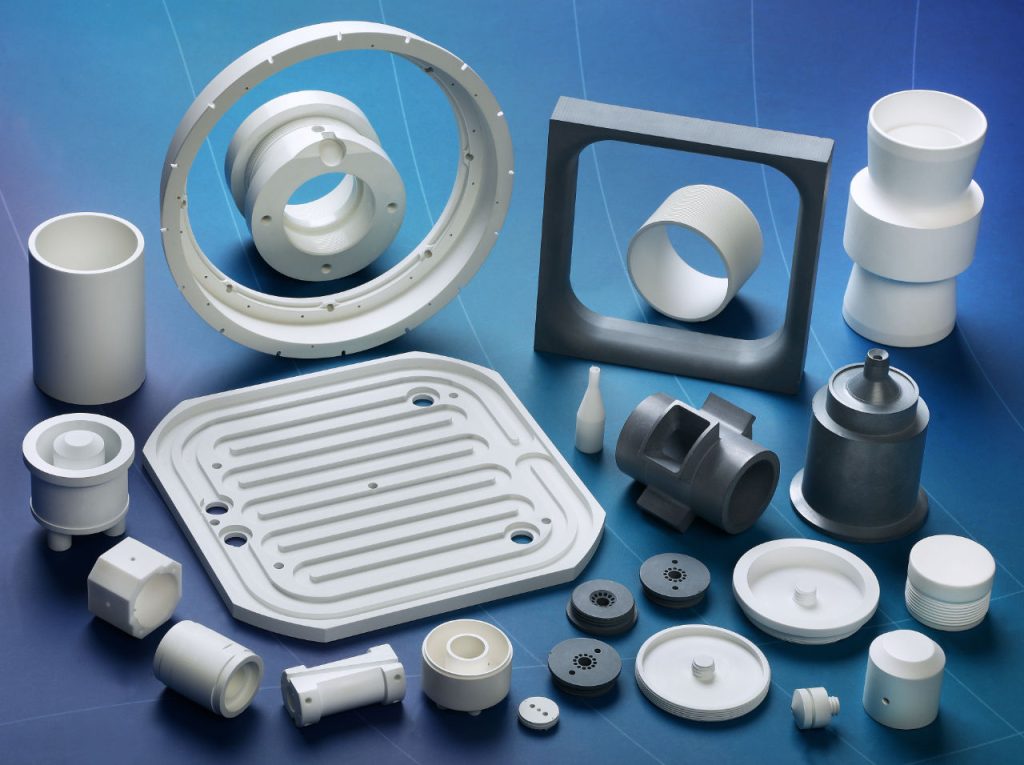
As a new ceramic material with excellent performance and great development potential, boron nitride includes five isomers, namely hexagonal boron nitride (h-BN), cubic boron nitride (c-BN), fiber Zinc mineral boron nitride (w-BN), rhombohedral boron nitride (r-BN) and rhombic boron nitride (o-BN).
Applications of Boron Nitride
Current research on BN mainly focuses on its hexagonal phase (h-BN) and cubic phase (c-BN). The former has lubricity, thermal conductivity and good high-temperature performance; the latter is also in a thermodynamic equilibrium and stable state at normal temperature and pressure. The main application area of h-BN is as a raw material for the synthesis of cubic boron nitride.
Hexagonal boron nitride
Hexagonal boron nitride is a material with high temperature resistance, corrosion resistance, high thermal conductivity, high insulation and excellent lubrication properties. According to the current situation, simplifying the process, reducing production costs and increasing the service life of components are the current comparisons of this type of material. Active research directions. Main applications: crucibles, boats, liquid metal delivery pipes, rocket nozzles, high-power device bases, etc. for smelting evaporated metals. It can also be used as various material additives.
cubic boron nitride
Used as abrasive material. Small particles of cBN single crystal can be used as abrasive material. CBN abrasive tools use the action of a bonding agent to bond cBN abrasive grains into products with a certain geometric shape as a superhard material abrasive tool.
Used as tool material. PcBN overcomes the shortcomings of cBN single crystal, such as easy cleavage and anisotropy, and is mainly used to make tool materials. PcBN cutting tools are particularly suitable for high-speed cutting and can also be used for high-precision cutting. They have been widely used in CNC machine tools and are suitable for cutting high-hardness materials.
With the continuous advancement of science and technology and the increasing demand for applications, boron nitride has broad prospects for future development. Here are some possible trends:
Improve preparation efficiency: Improving preparation efficiency is one of the ways to achieve large-scale production of boron nitride, and developing more efficient and economical preparation methods is its development goal.
At present, the preparation efficiency of boron nitride is low, requires higher temperature and pressure conditions, and the preparation cycle is long. One of the future research directions is to develop more efficient and economical preparation methods to improve the preparation efficiency of boron nitride.
Develop new materials: In addition to conventional boron nitride materials, new materials such as two-dimensional boron nitride and porous boron nitride will receive attention. These new materials have unique structures and properties and are expected to be used in a wider range of fields.
Expand application fields: Boron nitride has been widely used in electronics, optoelectronics, materials science and other fields. Its excellent performance can expand more application fields in the future, such as biomedicine, environmental protection and other fields.
Improve performance and stability: The mechanical and chemical properties of boron nitride can be improved by controlling the crystal structure and purity to meet higher application requirements in the future.
Effect of ultrafine fly ash powder on cement properties
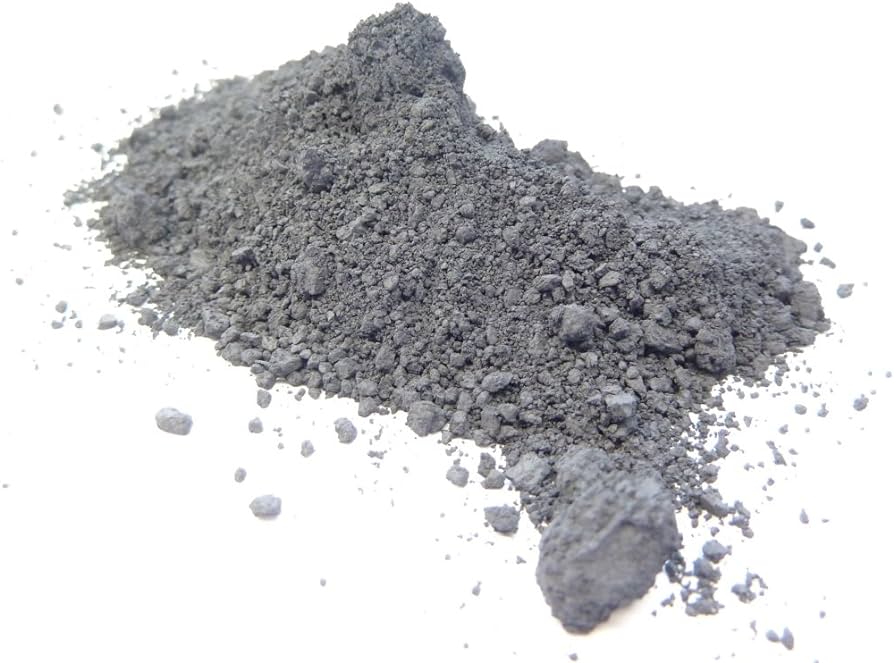
Fly ash is a small particle produced during the combustion process of coal-fired power plants. It is mainly composed of glass, minerals and carbon. Ultrafine powder refers to powder particles with a particle size less than 0.1 mm. In cement production, ultrafine fly ash powder can be used as an auxiliary cementing material to improve the performance of cement.
Effect of ultrafine fly ash powder on cement properties
1. Improve cement strength
Ultrafine fly ash powder can significantly improve the strength of cement. This is because the ultrafine fly ash powder has high activity and can react with the hydration products in the cement to form a denser structure, thus improving the strength of the cement. In addition, fly ash ultrafine powder can also fill the pores of cement, reduce the occurrence of cracks, and further enhance the strength of cement.
2. Improve cement fluidity
Fly ash ultrafine powder has good flow properties and can improve the fluidity of cement. Adding an appropriate amount of ultrafine fly ash powder to cement can reduce the viscosity of the mixture and improve its fluidity, making construction more convenient and faster.
3. Reduce cement hydration heat
Ultrafine fly ash powder can reduce the heat of hydration of cement. This is because the ultrafine fly ash powder can react with the minerals in the cement to form low-calorie compounds, thereby reducing the hydration heat of the cement. This is of great significance for the construction of large-volume concrete and can reduce the occurrence of temperature cracks.
4. Improve cement impermeability
Fly ash ultrafine powder can improve the impermeability of cement. This is because the ultrafine fly ash powder can react with the minerals in the cement to form a denser structure, reduce the generation of pores, and thus improve the impermeability of the cement. This is of great significance for projects such as basements that require waterproofing requirements.
Fly ash ultrafine powder is an industrial waste with high utilization value and can play an important role in cement production. By adding an appropriate amount of ultrafine fly ash powder, the properties of cement can be improved, increasing its strength, fluidity, impermeability and durability. At the same time, the application of ultrafine fly ash powder can also reduce cement production costs and environmental pollution, meeting the requirements of sustainable development.
Characteristics of conventional powders in the chemical industry
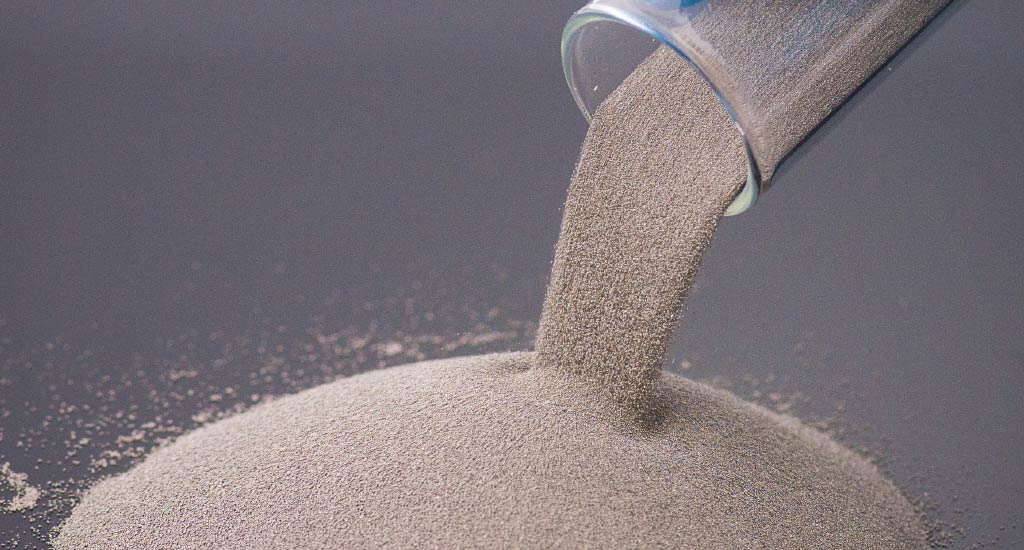
Characteristics of talc powder
Talcum powder, whose main component is hydrated magnesium silicate, is a white or off-white fine sand-free powder. It has excellent physical and chemical properties such as lubricity, fire resistance, acid resistance, insulation, high melting point, and chemical inertness.
Characteristics of kaolin clay
Kaolin, also known as dolomite, is a non-metallic mineral mainly composed of clay minerals of the kaolinite family, forming clay and clay rock.
In terms of chemical properties, kaolin has excellent electrical insulation properties, good acid solubility resistance, very low cation exchange capacity, high refractoriness and other physical and chemical properties.
Characteristics of mica powder
Mica powder is a non-metallic mineral whose main components are silica and aluminum oxide.
In terms of chemical properties, mica powder shows good acid and alkali corrosion resistance, high temperature resistance and other properties. In addition, plastic mica powder processed through special processes has the characteristics of high diameter-to-thickness ratio, high temperature resistance, acid and alkali resistance, and wear resistance. It is a natural functional powder filling material.
Characteristics of silica powder
Microsilica powder is a fine granular solid material with a particle size generally less than 1 micron. It is a new functional mineral raw material composed of natural microcrystalline quartz (a-quartz). It is mainly white or off-white.
Microsilica powder has a series of excellent properties: low thermal expansion coefficient, excellent dielectric properties, high thermal conductivity and good suspension performance.
Characteristics of aluminum hydroxide
In the chemical industry, aluminum hydroxide is mainly used as a flame retardant. It is not only flame retardant, but also prevents smoke, dripping, and toxic gases. Therefore, it has been widely used in electronics, chemicals, cables, plastics, rubber and other industries. In particular, ultrafine aluminum hydroxide has become the most widely used and widely used low-smoke, halogen-free material due to its multiple functions such as flame retardancy, smoke suppression, filling, and environmental protection.
Characteristics of alumina
Aluminum oxide, with the chemical formula Al2O3, is an inorganic substance. It is a compound with high hardness and a melting point as high as 2054°C. It is a typical ionic crystal and can be ionized at high temperatures.
Chemically, alumina is a highly hard material with a Mohs hardness of up to 9, which makes it widely used as a wear-resistant and corrosion-resistant material in many applications. Alumina has good thermal conductivity, and Al2O3 with high purity requirements is generally prepared by chemical methods.
In terms of industrial applications, aluminum oxide is widely used in the materials industry due to its high hardness, wear resistance and corrosion resistance.
Characteristics of barium sulfate
Barium sulfate is a colorless orthorhombic crystal or white amorphous powder with stable chemical properties and insoluble in water, acid, alkali or organic solvents. Barium sulfate is made from barite as the main raw material, and is processed through a series of processes such as mineral processing, mineral washing, and crushing.
Characteristics of diatomite
Diatomaceous earth is a naturally occurring inorganic mineral with colors such as white, off-white, gray and light gray brown, and has the characteristics of fine, loose, light and porous. It has very strong water absorption and permeability, so it is often used as a filler or anti-settling agent in paint, coating, rubber, plastic and other industries.
Diatomite also has good stability and is an important industrial material for heat insulation, grinding, filtration, adsorption, anticoagulation, demoulding, filling, carrier, etc.
Bentonite characteristics
Bentonite, also known as bentonite, bentonite or bentonite, is a non-metallic mineral whose main mineral component is montmorillonite.
The color of bentonite is usually white or light yellow, but due to changes in iron content, it may also appear light gray or light green.
Characteristics of transparent powder
Transparent powder is a new type of functional filler. It is a composite silicate. Its main component is a composite silicate containing magnesium, aluminum and calcium, which is an inorganic salt. Its characteristics are as follows:
1. High transparency
2. Good hardness and gloss
3. Low oil absorption
4. Good collapse resistance and less dust during use.
5. Ultra-transparent ultra-fine powder material is developed through the process of raw material selection-mixing-melting-rough grinding-fine grinding-grading.

